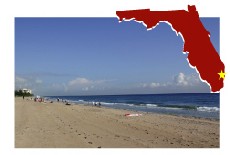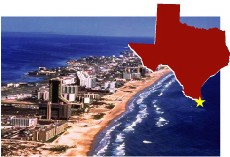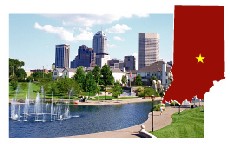What makes for a good place to practice optometry? A family-friendly environment, a strong local economy, the potential for higher income, and a scope of practice thats as wide as possible. These are the preferences of 156 respondents (about 16%) to our National Panel, Doctors of Optometry survey.
The 10 regions on our list have all (or most) of those favorable features that optometrists look for. Our admittedly lighthearted and quasi-scientific analysis weighed and ranked several factors, such as income, cost of living, scope of practice, family-friendly environment, climate, and our own National Panelists preferences.
When I go to optometry conferences and meet O.D.s from small towns, they seem to be doing very well, says one panelist from Pasedena, Calif. Indeed, many of our best places to practice are small towns, albeit ones that have the cultural and economic benefits of big cities. With that in mind, here are the best places we found.
1. Raleigh-Durham-Chapel Hill, North Carolina
For optometrists, scope of practice doesnt get much better than in North Carolina (well, besides Oklahoma). But several other factors put this area at the top of the list of best places to practice optometry. These include a booming economy, a relatively low cost of living, a concentration of intelligentsia, major cultural and sports attractions, good schooling, a mostly mild climate and an attractive environment.

The Research Trianglewhich includes the state capital of Raleigh, the medical/industrial complex that is now Durham, and the college town of Chapel Hillwas also named number one among Sperlings Best Places to Live 2003 (www.bestplaces.net) and the number one place to live and work in America by Employment Review. Thats largely due to the local economy. The employment forecast pictures job growth of more than 37% over the next decade. Major employers include high-tech companies, research facilities, universities and smaller start-ups.
Despite the health-care concentration in this area, optometrists arent elbow to elbow with one another. There are 12.5 optometrists per 100,000 people in the Raleigh area, just slightly higher than the national average of 11 O.D.s per 100,000. However, optometrists here have some competition for eye care with ophthalmologists at Duke University Eye Center.
The influx of newcomers to this dynamic area has increased the congestion in towns and in traffic. Nevertheless, the Raleigh-Durham-Chapel Hill area has the simple pleasures of small town life, the best benefits of a major metropolitan area, and fewer drawbacks of eitherfor now.
2. Palm Beach, Florida
The stretch of Palm Beach County coast, which includes the resort towns of West Palm Beach, Boynton Beach and Boca Raton, is a sportsmans paradiseif your sports are golfing, tennis, fishing or boating, says avid golfer and optometrist Salvatore M. DeCanio, Jr. (Golfers have 160 courses in the area to choose from.)
A native of the region, Dr. DeCanio says the South Florida coast gets high marks for quality of life. Thats good for optometrists lifestyle, but also good for
their business. People here choose lifestyle options, which means higher-end eyewear, progressive and polycarbonate lenses, and [higher-end] contact lens options, he says. Affluent patients also mean there can be a larger private-pay segment of an optometrists practice.

But back to the lifestyle With an average year-round temperature of 74, Floridas climate cant be beat. Add to that the rich mix of restaurants, shopping, beaches and bars in this pleasure-seeking region, and you can see why its one of the best places to practice.
Although its a competitive area for eye care, young entrepreneurial O.D.s have many opportunities to establish partnerships with or become associates to solo senior optometrists who are looking to retire. [Senior doctors] have the patient base, and thats the gold, Dr. DeCanio says. [Young] doctors need to understand that everything in the office is easily replaceable, except the patients.
3. Rio Grande Valley, Texas
On a map, the southernmost point of Texas appears to gently dip its toe into the warm waters of the Gulf of Mexico. But this area is diving headlong into economic growth and investment.
According to the U.S. Census Bureau, the McAllen-Edinburg-Mission metro area was the fourth fastest-growing area in the nation during the 1990s. In 2003, this metro area ranked number nine among the Milken Institutes best-performing cities. In the adjacent county, the towns that make up the metro area of Brownsville-Harlingen-San Benito ranked number eight on Milkens list.
Much of the Valleys success derives from its geographical and cultural link with Mexico, just across the Rio Grande. The North American Free Trade Agreement has led to a unique symbiosis between the towns on the U.S. side and those on the Mexican side. The twin plantor maquiladoraconcept of manufacturing employs the labor force in Mexico coupled with support facilities on the U.S. side. The result: International businesses are springing up in the sub-tropical landscape among the areas traditional citrus groves and gardens.

Texas, in general, is a good place for optometrists, with a comparatively higher level of incomethe average Texas O.D. earns $118K, according to the Bureau of Labor Statisticsand one of the lowest average costs of living. The area is also a haven for birdwatchers, and the beaches of Padre Island are just offshore.
4. Lexington, Kentucky
Lexington is pretty much encircled by some 300 horse farms, says optometrist Ward Ransdell, a transplant from Ohio by way of Chicago. You can be in downtown Lexington and, 10 minutes later, driving around really beautiful country.
Thats not to say that Lexington, self-billed as the Horse Capital of the World, is living in the past. The region now produces a different kind of horsepowerToyota carsin addition to Lexmark computer printers, as well as the more traditional Kentucky staples of bourbon and tobacco. The local universities and hospitals are also major employers. The countys unemployment rate has recently been about half the national jobless rate, and the cost of living is below average compared with national statistics.

Optometrists in Kentucky have the benefits of full scope of practice and one of the nations most spirited state optometric associations. Theres plenty of competition in the city itself, says Dr. Ransdell, but outside of the city limits theres tremendous opportunities for doctors who want to go into rural or small town practices.
The people are greatwarm and inviting and helpful, Dr. Ransdell adds. Its a big city with a small town atmosphere. Folks in Lexington arent so rushed. They take the time to stop and smell the bluegrass.
Or the bourbon, he jokes.
5. Charleston, South Carolina
Charleston is sort of like New Orleans is to Louisiana; its a totally different city as opposed to the rest of the state, says Charleston native Robert C. Brooks, O.D. By this, he means that Charleston is steeped in a rich heritage that also displays a modern cosmopolitan flair.
Charleston, with its historic homes, churches and municipal buildings, consistently ranks as one of the top 10 North American travel destinations by Cond Nast Traveler. But its a great place to live, too, with fine restaurants, year-round cultural events and, thanks to the coastal climate, moderate weather (though the summers do get hot, Dr. Brooks admits).

The bustling port towns major employers are the U.S. Navy and Air Force, as well as the Medical University of South Carolina. Job growth is steady.
The Low Country has seen double-digit population growth, especially in the suburbs. Not only in Charleston, but as you see the suburban areas grow, there are lots of opportunities for those who want to open their own office, Dr. Brooks says. He opened his solo practice cold 11 years ago. Its not that hard. You just have to get out there and do it.
6. Suburban Tulsa, Oklahoma
Everyone knows that O.D.s in Oklahoma have the most progressive scope-of-practice law. What you may not know is that its also a nice place to live. Its not just endless plains. The northeastern part of Oklahoma has rolling wooded hills, winding streams and lakes.
I think its great, says optometrist Larry A. Riley, who aims to keep it a secret. But I dont want 100 new optometrists in the community, he says, only half-joking. Dr. Riley and his wife, also an optometrist, run a practice in the town of Claremore, about 22 miles east of Tulsa. On the legendary Route 66, Claremore is one of the fastest-growing towns in the fastest-growing county in Oklahoma.

Other nearby towns are experiencing similar growth. Owasso, a town of 30,000, is home to aerospace and manufacturing industries. The Port of Catoosa, adjacent to Tulsa on the Arkansas River, is the worlds most inland port, and it continues to develop.
Its a good environment for families, with a lot of good honest folks, Dr. Riley says. Also, cost of living is low, and home prices are well below the national average.
7. Scottsdale, Arizona
Scottsdale is called The Wests Most Western Town for its association with the Old West. But in truth, the town wasnt incorporated as a city until 1951. Really, its a resort destination with spas, art galleries, some
174 golf courses in the area, and 329 sunny days a year. Although dry, its not quite a desert climate; its situated in a valley at an elevation of 1,259 feet, with mountains on all sides.

Scottsdales population is a mix of young professionals, families and retirees, and the city is part of the greater Phoenix metro area, an area growing in population at twice the national rate.
The younger-skewed, upwardly mobile population is big on recreation, such as hiking, horseback riding, shooting, tennis, and of course golf, says optometrist Annette Hanian, a transplant to Scottsdale from Canada. For optometrists who cater to these active patients, it allows you to offer patients a variety of options and allows for creativity in choosing eyewear and contact lenses, besides just the obvious need for sunglasses, she says.
8. Northwest Arkansas
Say what you will about Wal-Mart. But the mega-chain, which opened its first store here in the town of Rogers in 1962, has been good to Northwest Arkansas. Arkansas is one of the few states where the optometrists do not work for Wal-Mart, but can have their practice within the store, says DeAnne Witherspoon, O.D., president of the Arkansas Optometric Association, who indeed has a practice inside the Wal-Mart in Rogers.
Headquartered here, Wal-Mart is now the areas major employer, and has attracted other large businesses. In 2003, the regionwhich includes the small towns of Fayetteville, Springdale and Rogerswas ranked number one among the Milken Institutes best performing cities for economic growth. The economic boom has fostered big city benefits amid small town culture, Dr. Witherspoon says.

Plus, Arkansas O.D.s earn the highest average income$142,000according to the Bureau of Labor Statistics, while the state has just about the lowest average cost of living.
Another positive aspect to eye care in Arkansas: O.D.s and ophthalmologists tend to work collaboratively, Dr. Witherspoon says. Perhaps they modeled the multidisciplinary approach after the local O.D./O.M.D. practice of brothers John Boozman, O.D., now a congressman, and Fay Boozman, M.D., now the director of the state department of health.
9. Indianapolis, Indiana
What is a Hoosier, anyway? No one knows, but the term connotes no-nonsense perseverance and warm-hearted friendliness. Those qualities also characterize Indianapolis, which has undergone a dramatic revitalization during the last decade.
Last year, ESPN Magazine ranked Indianapolis the number two ultimate sports city in North America. The town has a new arena for the Indiana Pacers, the Colts indoor dome, and of course the Brickyard 400 and the Indianapolis 500. The basketball and football arenas are within walking distance in the city center, amid restaurants, bars and an upscale shopping mall.

For optometrists in Indiana, there is good cooperation with ophthalmologists on a political as well as clinical level, says Gerald Lowther, O.D., dean of Indiana University School of Optometry, in Bloomington, about 50 miles away.
10. Annapolis, Maryland
Maryland, ranked dead last in terms of prescriptive authority, may have artificially landed in the top 10 due to its very low ratio of optometrists per 100,000 people. And that low ratio, normally an attraction to open a practice, probably stems from the lack of optometrists who choose to practice in Maryland. In addition to the least prescriptive authority, the state has one of the highest ratios of ophthalmologists per population.

But Maryland has its positive points, too, and shouldnt be dismissed out of hand as a good place to practice. Optometrist Stanley A. Appelbaum has offices in both Bethesda and Annapolis, and thrives through a large vision therapy (combined with occupational therapy) practice.
Bethesda, a ritzy suburb of Washington, D.C., has the big city atmosphere and clientele. But Annapolis, he says, still has the charm of a small town community, with many patients coming to me from farms and the Eastern Shore.
Indeed, the harbor town of Annapolishome to the Naval Academy and known as Americas sailing capitalhas been named by Modern Maturity magazine as one of the Most Alive Places to Live for baby boomers.
I love sailing and boating, Dr. Appelbaum says, which makes living close to the Chesapeake Bay (the best sailing in the world) one of my favorite things in life.
If you find that you disagree with the winners of our top 10 list, youre not alone.
About three out of five (61%) of our National Panelists think their hometown is the best place to practice optometry.

